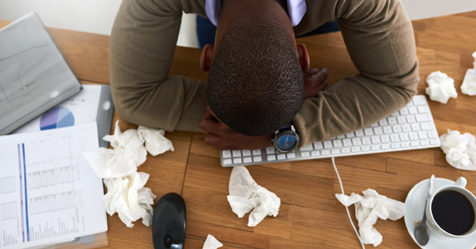Although the novel coronavirus, SARS-CoV-2, has been the main pathogen of concern lately, one of the major roles of a university’s Environmental Services (EVS) staff is infection control against norovirus and Methicillin-resistant Staphylococcus aureus (MRSA). Shared spaces and surfaces, along with close quarters on a school campus, make it easy to contract norovirus and MRSA, putting students, faculty, staff, and visitors at greater risk of infection.
Norovirus 101
According to the U.S. Centers for Disease Control and Prevention (CDC), norovirus causes inflammation of the intestines or stomach (gastroenteritis) and is very contagious. The virus is spread by direct contact with an infected person(s), touching contaminated surfaces, touching one’s face and hands with unwashed hands, or consuming contaminated food or water. An individual usually develops symptoms within 12 to 48 hours after being exposed and gets better within one to three days. Stomach pain, diarrhea, nausea, and vomiting are the most common symptoms.
The CDC defines an outbreak as an occurrence of two or more similar illnesses resulting from common exposure that is suspected or laboratory-confirmed to be norovirus. Norovirus outbreaks mostly occur from November to April and could possibly lead to campus closures.
MRSA facts
Universities, especially campus athletic facilities, also are at higher risk for MRSA infections. MRSA is a type of bacteria that is resistant to several antibiotics. Those living and working on a university campus are susceptible as the risk increases in locations and through activities that involve crowds, shared supplies or equipment, or skin-to-skin contact. Like norovirus, MRSA spreads via contaminated surfaces. It can survive on high-touch surfaces—such as athletic equipment—for hours, days, or even weeks. It can cause infections if it gets into a scrape, open wound, or cut. As symptoms of a MRSA infection vary, it is hard to confirm without laboratory tests.
Find solutions
Cleaning and disinfecting are an EVS team’s best defense against pathogens. Put safety first by ensuring your staff has the required personal protective equipment (PPE). Recommendations include: disposable gloves, surgical masks (N95), eye protection or face shield, disposable coveralls, and hair and shoe covers. Train your staff on how to properly put on, wear, and take off their PPE.
Take inventory of your supplies to make sure you have the necessary equipment for cleaning and disinfecting the entire campus. Must-have items include paper towels and/or disposable cloths, trigger sprayers, trash bags, duct tape for sealing waste bags, mops, and buckets.
Before choosing disinfectants, read product labels to ensure they are registered by the U.S. Environmental Protection Agency (EPA) to kill norovirus and/or MRSA. Adhere to the manufacturers’ cleaning instructions, including the recommended dwell times. Note that some chemicals also may require rinsing after the dwell time.
After you’ve finished disinfecting an area, dispose of your coveralls, gloves, and cleaning materials (including disposable mop heads) in a trash bag, seal it with duct tape, and place it in
a dumpster.
When it comes to MRSA prevention, pay special attention to athletic facilities including locker rooms and shared equipment. Clean equipment after each use and allow it to dry. Follow the equipment manufacturers’ instructions to ensure the cleaning solution will not damage the items.
Focus on commonly touched surfaces that come into direct contact with a person’s bare skin such as chairs, benches, gym equipment, lockers, faucets, and light switches. (Place special emphasis on surfaces that could come into contact with uncovered wounds, cuts, or boils).
When a norovirus outbreak occurs, it is crucial for university officials to promptly meet and devise an action plan that ensures the health and safety of the university community while containing the spread of the illness throughout campus and the surrounding neighborhood. This plan must include involvement from various groups, such as Medical/Student Health Services (SHS), Environmental Health and Safety (EH&S), Greek Life, Campus Life Facilities, University Dining, faculty/staff, parents, and especially the local county health department.
EVS staff are the frontline of defense against infection control on campus. Make sure your workers are aware, properly trained, and appreciated for the important work they do.




